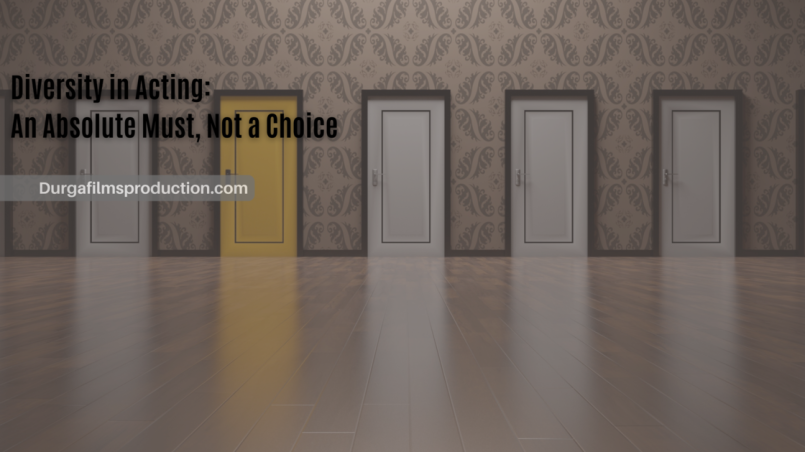Diversity has always been a sensitive topic in the performing and acting industries. So in this blog we are going to talk about Diversity in Acting: An Absolute Must, Not a Choice. A homogenized landscape that generally ignored underrepresented communities in favor of mainstream themes dominated screens and stages for a considerable amount of time. Even though there has always been a discussion about diversity in acting, the need for meaningful representation is greater than ever.
Jump to
- The Previous Theory
- The Change in Culture
- The Business Example
- The Value of Telling True Stories
- The Difficulties to Come
- Conclusion
The Previous Theory
The idea that mainstream (often white, heterosexual, and male) characters are universally relatable served as the foundation for Hollywood and other international film industries for many years. Frequently, minorities were reduced to clichés, token positions, or complete absences. Minority groups were denied the agency to tell their own experiences, and negative preconceptions were reinforced by the lack of representation, which had both overt and covert negative effects.
The Change in Culture
Instead of just being a rallying cry for underprivileged populations, a more socially conscious audience now demands diversity in acting. Social media’s introduction has fueled a raging issue by holding the industry accountable through movements like #OscarsSoWhite and #TimesUp. This is leading to a profound cultural change. Casting directors, audiences, and filmmakers all agree that diversity is now a must, not only a choice.
The Business Example
Diversity is not only a commercial requirement but also a societal obligation. In both domestic and foreign markets, films and television series with a diverse cast and crew typically fare better than those without. For example, the financial success of films such as “Black Panther,” “Crazy Rich Asians,” and television shows such as “Orange is the New Black” demonstrate that people want to see themselves reflected on screen in a sensitive and mature way.
The Value of Telling True Stories
Despite the fact that choosing a diverse cast of performers is a positive start, it is imperative that these actors be assigned parts that provide intricate, multifaceted storylines. Characters shouldn’t be limited by their sexual orientation, disability, or race or ethnicity; authenticity in storytelling is vital. Insufficient representation can be as harmful as stereotypes.
The Difficulties to Come
There are several obstacles in the way of diversity in performing. Typecasting is a serious problem where actors from minority groups are restricted to certain roles because of their gender, race, or physical appearance. The lack of diversity in the crew behind the camera is another problem. Diverse storytellers that can offer a range of viewpoints are often needed for diverse storytelling, including authors, directors, and producers.
Conclusion

Diversity in acting is a difficult but important project that calls for deliberate and constant work from all parties involved. The industry needs to change to be relevant as viewers grow more diverse and want representation. The desire for variety is a reflection of the modern world rather than a passing fad. We improve the human experience as a whole and make it more genuine and inclusive when we embrace it.


